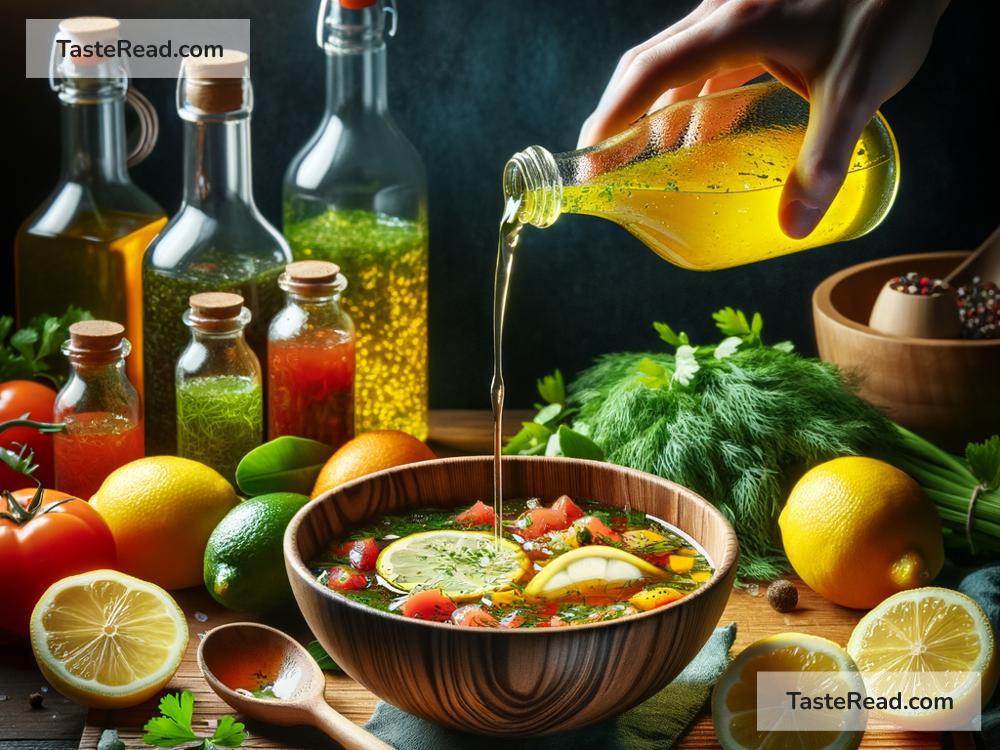The Science of Cooking with Acid: Techniques and Tips
Cooking is a magical blend of science and art, where even the simplest ingredients can transform a meal. One powerful tool in the kitchen is acid. You may not think about it every day, but acids play a major role in enhancing flavors, tenderizing meat, and even preserving food. From lemon juice to vinegar, acidic ingredients are everywhere! In this blog, we’ll explore the science of cooking with acid, share some techniques, and give you tips to make your dishes shine.
What is Acid in Cooking?
Acids are substances with a pH level below 7, and they include foods like citrus fruits (lemons, limes, oranges), vinegars, yogurts, and even tomatoes. In the culinary world, acidic ingredients add brightness, balance, and complexity to dishes. They shape flavors, making sweet dishes more lively and savory dishes more well-rounded.
Why Does Acid Matter in Cooking?
There’s actual science behind how acids work in food! Here’s how acids contribute to cooking:
1. Enhancing Flavor
Have you ever squeezed lime juice onto tacos or drizzled vinegar over a salad? That pop of acidity can bring flavors to life. Acids balance richness and sweetness, creating a harmony of tastes. For example, adding a splash of lemon juice to a creamy soup cuts through the heaviness, making it taste fresher.
2. Tenderizing Meat and Proteins
Acid breaks down proteins, which makes meats tender and juicy. That’s why marinades often include acidic ingredients like yogurt, wine, or citrus juice. For instance, when you marinate chicken in yogurt, the acid softens the fibers in the meat, making it more succulent.
3. Helping with Cooking Reactions
Acids influence chemical reactions in cooking. For example:
– Baking: Acids react with baking soda to produce carbon dioxide bubbles, which make baked goods rise. Recipes for pancakes, muffins, or banana bread often include acidic ingredients like buttermilk or vinegar for fluffiness.
– Vegetables: Acids like lemon juice or vinegar can keep vegetables vibrant during cooking. Adding a bit of acidity helps certain greens retain their bright colors.
4. Preserving Food
Acidic ingredients are great at preserving food. Vinegar, for instance, is key in pickling vegetables. The acid slows microbial growth, keeping foods safe to eat for weeks or months.
Common Acidic Ingredients
Here are some popular acidic ingredients you’ll find in your kitchen:
- Citrus Fruits: Lemon, lime, orange, and grapefruit juice add freshness and tang to dishes.
- Vinegars: Balsamic, apple cider, white, or rice vinegar are versatile and enhance both savory and sweet recipes.
- Tomatoes: Fresh or canned tomatoes contain natural acidity that enriches sauces and soups.
- Yogurt & Buttermilk: These creamy acids not only tenderize proteins but also bring tangy flavor to dressings and marinades.
- Wine: Red or white wine is used in many recipes for its acidity and depth of flavor.
Techniques for Cooking with Acid
Now that we know the science, let’s talk about how to use acidic ingredients effectively.
1. Balancing Flavors
The right amount of acid can elevate a dish but too much can overwhelm it. Taste as you go, adding acid sparingly. A drizzle of lemon juice or splash of vinegar can transform an ordinary meal into something special.
Tip: If your dish becomes too acidic, balance it by adding sweetness (sugar, honey) or richness (butter, cream).
2. Marinades for Meat
When marinating meat, use acidic ingredients to tenderize while adding flavor. Pair acids like lemon juice or yogurt with oils and herbs for a balanced marinade.
Tip: Avoid marinating meat for too long—too much time in acid can make it mushy. 30 minutes to 2 hours is usually enough.
3. Brightening Cooked Dishes
Acid doesn’t only improve raw ingredients—it can bring cooked items to life. A squeeze of lime over grilled vegetables or a splash of vinegar in a soup adds complexity and brightness.
Tip: Add acid toward the end of cooking. This preserves its tangy flavor and prevents it from being “cooked out.”
4. Pickling Vegetables
Want a tangy crunch? Pickling involves soaking vegetables in a solution of vinegar, water, salt, and sugar. It’s an easy way to preserve vegetables while creating snacks or toppings for meals.
Tip: Experiment with spices like garlic, dill, or chili flakes to customize your pickling liquid.
Tips for Success
- Understand the Role of Acid: Acids work best as a balancing ingredient, not as the main flavor. Use them to add subtle complexity to your dishes.
- Start Small: Always add acidic ingredients a little at a time and taste as you go. Too much acid can overpower a dish.
- Pair Flavors Thoughtfully: Citrus pairs well with seafood or salads, while vinegars are great for dressings, sauces, and marinades. Balance acid with fat and sweetness for the best results.
Final Thoughts
Cooking with acid is one of the simplest ways to bring out the best in your food. Whether it’s brightening a salad with lemon juice or tenderizing meat with yogurt, acids are key to creating unforgettable meals. The science behind it is fascinating, but the techniques are easy to master. Start experimenting with acidic ingredients in your kitchen, and you’ll soon discover just how transformative they can be.
Happy cooking!


